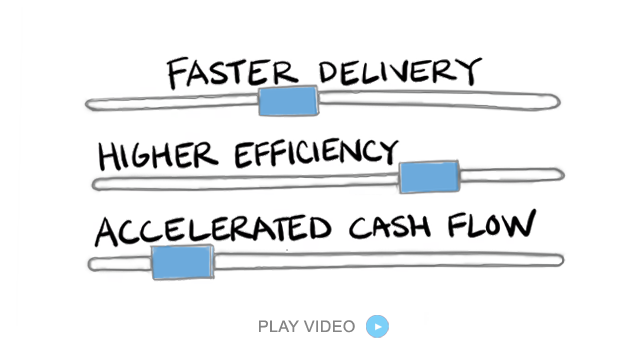Refining Production Planning with KPIs
In the competitive landscape of industrial manufacturing, effective production planning can be the difference between operational excellence and missed opportunities. For production planners, balancing capacity, resources, and customer demands requires precision and real-time insights. The key to achieving this balance lies in defining and tracking the right Key Performance Indicators (KPIs). Moreover, leveraging advanced tools like PlanetTogether integrated with enterprise solutions like SAP, Oracle, Microsoft Dynamics, Kinaxis, or Aveva enhances decision-making and streamlines processes.
This blog explores the essential production planning KPIs that drive success and how integration between PlanetTogether and leading enterprise systems can elevate these metrics.

KPIs in Production Planning
KPIs serve as measurable values that reflect how effectively an organization meets its production goals. For production planners in industrial manufacturing, KPIs provide insights into operational efficiency, resource utilization, and on-time delivery. Tracking these metrics allows planners to identify bottlenecks, optimize workflows, and align production with business objectives.
The most effective KPIs are:
Specific: Targeted to particular aspects of production.
Measurable: Quantifiable with reliable data sources.
Actionable: Provide insights that lead to clear actions.
Relevant: Align with organizational goals and production priorities.
Time-bound: Evaluated over defined periods for progress tracking.

Top Production Planning KPIs for Industrial Manufacturing
1. On-Time Delivery Rate (OTD)
Definition: The percentage of orders delivered on or before the committed date.
Why It Matters: OTD reflects the reliability of production schedules and supply chain efficiency. High OTD indicates effective planning, while low rates may signal production delays or poor resource allocation.
Integration Insight: By connecting PlanetTogether with SAP or Oracle, production planners can synchronize schedules with real-time order data, ensuring that delivery timelines align with manufacturing capacities and customer expectations.
2. Production Cycle Time
Definition: The time taken to produce a single unit or batch from start to finish.
Why It Matters: Longer cycle times can lead to bottlenecks, increased costs, and delayed deliveries. Reducing cycle time boosts throughput and responsiveness.
Integration Insight: PlanetTogether’s advanced scheduling algorithms, when integrated with Kinaxis, offer predictive insights into cycle time adjustments. Planners can simulate scenarios and optimize workflows for minimal delays.
3. Capacity Utilization
Definition: The percentage of available production capacity that is being utilized.
Why It Matters: Underutilized capacity signals inefficiency, while overutilized capacity risks equipment breakdowns and employee burnout.
Integration Insight: By integrating PlanetTogether with Aveva, planners gain real-time visibility into equipment and workforce availability. This enables dynamic adjustments to production schedules, balancing workloads without overburdening resources.
4. Schedule Adherence
Definition: The degree to which production follows the planned schedule.
Why It Matters: Deviations from schedules disrupt downstream processes and impact OTD. High adherence ensures smoother operations and predictable outputs.
Integration Insight: With PlanetTogether and Microsoft Dynamics working in tandem, planners can monitor deviations in real-time and take corrective actions instantly, ensuring that schedules remain on track.
5. Inventory Turnover
Definition: The number of times inventory is used or sold over a given period.
Why It Matters: High turnover indicates efficient inventory management, while low turnover suggests overstocking or slow-moving goods.
Integration Insight: Connecting PlanetTogether with Oracle or SAP enables integrated inventory visibility. Planners can align production schedules with inventory levels, avoiding overproduction or stockouts.
6. Downtime and Uptime Ratio
Definition: The ratio of operational time (uptime) to downtime in manufacturing equipment.
Why It Matters: High downtime disrupts production and inflates costs. Optimizing this ratio ensures maximum resource utilization.
Integration Insight: When integrated with Aveva’s predictive maintenance tools, PlanetTogether can proactively reschedule production around planned maintenance windows, minimizing unplanned downtime.
7. Cost per Unit
Definition: The total production cost divided by the number of units produced.
Why It Matters: Monitoring this KPI ensures that production remains cost-effective and competitive.
Integration Insight: With Kinaxis integration, PlanetTogether enables planners to assess cost implications of different scheduling scenarios, supporting decisions that minimize expenses without sacrificing quality.
![]()

Enhancing KPIs with PlanetTogether and Enterprise System Integration
Real-Time Data Synchronization
Integrating PlanetTogether with enterprise systems like SAP, Oracle, or Microsoft Dynamics ensures seamless data flow between production planning, procurement, and sales. Real-time data enables planners to make informed decisions quickly, directly impacting KPIs like OTD and schedule adherence.
Scenario Planning and Optimization
PlanetTogether’s scenario modeling capabilities become even more powerful when integrated with Kinaxis. Planners can evaluate multiple scheduling scenarios, balancing costs, capacity, and delivery timelines. This enhances KPIs like cost per unit and capacity utilization.
Predictive Maintenance Integration
By connecting PlanetTogether with Aveva’s maintenance solutions, production planners can anticipate equipment failures and schedule maintenance proactively. This reduces downtime and improves uptime ratios, positively affecting cycle time and OTD.
Inventory Synchronization
Inventory visibility across SAP or Oracle systems allows PlanetTogether to optimize production schedules in alignment with inventory levels. This reduces excess stock and improves inventory turnover, directly impacting cost efficiency.

Actionable Steps for Production Planners
Define Relevant KPIs: Choose KPIs that align with your facility's goals and production challenges.
Leverage Integrated Systems: Implement tools like PlanetTogether integrated with your ERP or supply chain management systems to enhance data-driven decision-making.
Monitor and Adjust: Continuously track KPIs and adjust production schedules based on real-time insights and scenario planning.
Collaborate Across Teams: Work closely with procurement, sales, and maintenance teams to ensure alignment of schedules and resources.
Invest in Training: Equip your team with the skills to leverage integrated tools effectively for production planning.
The Competitive Edge of KPI-Driven Planning
In the industrial manufacturing environment, data-driven production planning is not just an advantage—it’s a necessity. By focusing on key KPIs and leveraging the integration of PlanetTogether with enterprise systems like SAP, Oracle, Microsoft Dynamics, Kinaxis, or Aveva, production planners can transform their operations into models of efficiency and reliability.
When KPIs are aligned with robust tools and real-time data, planners gain the clarity and control needed to meet customer demands, optimize costs, and drive operational excellence. Start with the right KPIs, and let integrated technology be your guide to success.
Are you ready to take your manufacturing operations to the next level? Contact us today to learn more about how PlanetTogether can help you achieve your goals and drive success in your industry.
Topics: Industrial Manufacturing, PlanetTogether Software, Integrating PlanetTogether, Inventory Turnover Rate, On-Time Delivery Rate (OTD), Production Cycle Time, Schedule Adherence, Capacity Utilization, Downtime and Uptime Ratio, Cost per Unit





















LEAVE A COMMENT